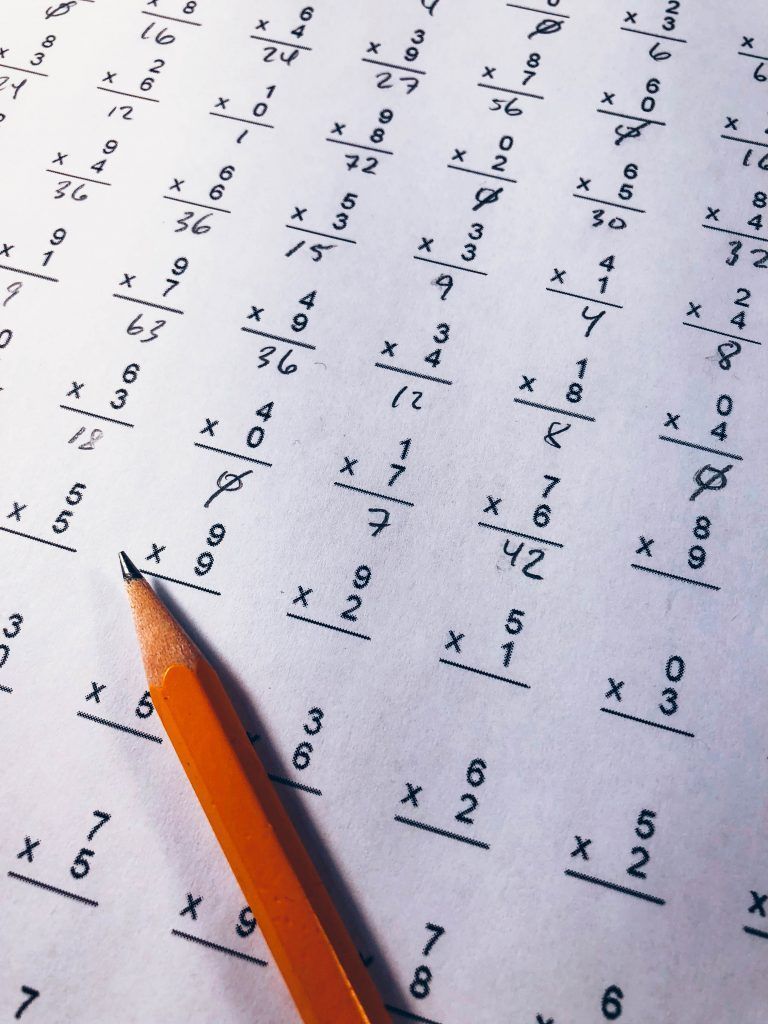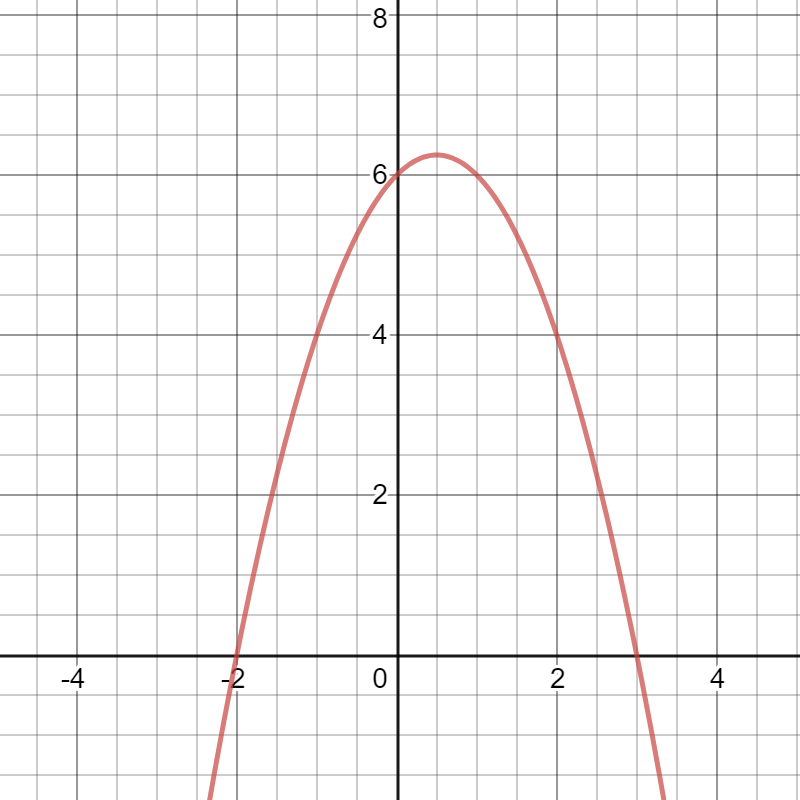Quadratic Review Standard Form Worksheet Answer Key Algebra 1
Looking to understand the dissimilar forms of quadratic equations? Read beneath for an caption of the iii chief forms of quadratics (standard form, factored form, and vertex form), examples of each class, besides every bit strategies for converting between the diverse quadratic forms.

Your mathematics journey has taken you far. There was a fourth dimension when the words "variable" and "equation" were simply concepts you would someday understand. The skills you developed then gave you lot a foundation of using mathematics to solve elementary problems. And so, you delved into variables and unknown values. You lot conquered solving equations for the value of x. You are able to create and translate graphs of equations.
At present, nosotros are opening a new tool: quadratics! Quadratic equations may feel unlike, scary, exciting, or all of the above. Regardless of how you feel going into learning quadratic equations, know that you can conquer this, too. You are entering a new level of mathematical understanding and a new earth of real-life situations to model. Let'south get started!
The 3 Forms of Quadratic Equations
In that location are three commonly-used forms of quadratics:
2. Factored Form: y=a(ten-r_1)(x-r_2)
iii. Vertex Course: y=a(x-h)^two+thou
Each quadratic class looks unique, allowing for different problems to be more easily solved in ane form than some other. Nosotros will unpack the features of each form and how to switch between forms.
Return to the Table of Contents
Why are There Forms of Quadratic Equations?
Each form of a quadratic equation includes specific advantages. Recognizing the benefits of each different grade can brand information technology easier to sympathise and solve different situations.
What Does the Standard Course of a Quadratic Tell Y'all?
Let u.s.a. begin with the benefits of standard course. In standard mathematical annotation, formulas and equations are written with the highest caste start. The degree refers to the exponent. In the case of quadratic equations, the degree is 2 considering the highest exponent is two. Following the x^two term is the term with an exponent of one followed past the term with an exponent of aught.
y=ax^2+bx+c
The benefits of standard form include rapidly identifying the cease behavior of a function and identifying the values of a, b, and c.
The end beliefs of a function is identified by the leading coefficient and the degree of a role. The degree of a quadratic equation is always ii. The leading coefficient of a quadratic equation is always the term a when written in standard form.
If the value of a is positive, the parabola opens up, meaning the function rises to the left and rises to the correct. If the value of a is negative, the parabola opens downwards, meaning the function falls to the left and falls to the correct.
y=3x^2+2x-1

Discover: positive a value, degree of 2, parabola opens "up"
y=-3x^2+2x+1

Notice: negative a value, caste of 2, parabola opens "downwards"
Ane method for solving a quadratic equation is to use the quadratic formula. To do so, we must identify the values of a, b, and c. To learn more about this, read our detailed review article on the quadratic formula.
What Does the Factored Form of a Quadratic Tell You?
Next, let's now consider why factored course is useful. To get to factored course, we do exactly what it sounds like: we factor the equation from standard form.
y=a(x-r_1)(x-r_2)
In the factored form of a quadratic, we are likewise able to decide end behavior using the value of a. Although the degree is not as easily identifiable, we know at that place are only ii factors, making the degree two. The stop behavior follows the same rules explained above.
The additional benefit of factored course is identifying zeros, or x-intercepts, of the function. The value of r_1 and the value of r_2 are both zeros (also chosen "solutions") of the quadratic office.
y= - (10 + ii)(x - 3)

Zeros: x = -2 \text{ and } ten= three
We must note that not all quadratics have "real" zeros (some quadratics require imaginary numbers as their zeros), and then factored form may not always be applicative.
What Does the Vertex Form of a Quadratic Tell You?
Finally, we take the vertex form of a quadratic. Recall, the vertex is the point where the axis of symmetry intersects the parabola. It is besides the everyman indicate of a parabola opening up or the highest bespeak of a parabola opening downwards.
y=a(ten-h)^ii+k
As you lot may wait, the master do good of vertex grade is easily identifying the vertex. The vertex of a parabola, or a quadratic equation, is written as (h,chiliad) where the h is the ten-coordinate and the k is the y-coordinate.
As nosotros can see, the value of h and the value of k are easily identifiable in this course. Additionally, we can still determine the terminate behavior using the value of a.
y= 3(ten-two)^2 - 1

Vertex: (2,-1)
Return to the Tabular array of Contents
What is the Standard Form of a Quadratic?
y=ax^2+bx+c
Remember, standard form provides us values for the coefficients a, b, and c, while x and y are the variables.
For example, the equation:
y=3x^2+7x-9
…is in standard form, telling united states of america that a=three, b=7, and c=-9.
What is the Factored Form of a Quadratic?
y=a(ten-r_1)(x-r_2)
In factored form, we can encounter the zeros, also chosen x-intercepts, are r_1 and r_2. Our variables remain x and y, and a is a coefficient.
In the factored form equation:
y=3(10+8)(x-half-dozen)
…the two x-intercepts are -8 and 6, and the value of a equals 3.
What is the Vertex Form of a Quadratic?
y=a(x-h)^two+m
In vertex form, the variables x and y and the coefficient of a all the same remain, but at present nosotros can identify the vertex using the values of h and yard.
For instance, in the equation:
y=-7(10-2)^2+16
…which is in vertex form, the vertex is (2,xvi) and the value of a is -ii.
Converting Betwixt Forms of Quadratic Equations
Often, we demand many different pieces of data almost quadratic equations. It tin be useful to see the same quadratic equation in the multiple forms. Just like a chameleon can modify colors in different situations, we can change the forms of quadratics to suit our needs.

Change forms of a quadratic like a chameleon!
The ability to switch between forms speedily and accurately enables us to understand the quadratic equation well and easily identify needed pieces of information. For example, you may be asked to decide the zeros of a quadratic equation given in standard form. In club to place the zeros, we first must alter the equation to factored course.
Return to the Table of Contents
Convert from Standard Course to Factored Course
Allow us begin with the equation:
y=x^2+5x-24
We may be asked for the zeros of the equation. In lodge to determine the zeros, we can change this into factored form. To change this into factored form, we must factor the expression x^ii+5x-24. Permit's remember what Factored Form looks like:
y=a(10-r_1)(x-r_2)
In order to factor the expression, we must make up one's mind the factors of -24 that have a sum of five. Nosotros can listing the factors of -24 and their sums:
| Factors | Sum of Factors |
|---|---|
| -24 and 1 | -24 + 1 = -23 |
| -i and 24 | -1 + 24 = 23 |
| -12 and 2 | -12 + ii = -10 |
| -two and 12 | -two + 12 = x |
| -6 and iv | -6 + 4 = -2 |
| -4 and 6 | -4 + 6 = 2 |
| -viii and 3 | -8 + iii = -5 |
| -three and 8 | -three + 8 = 5 |
The ii values that multiply to -24 and accept a sum of 5 are -3 and eight. Therefore, we can rewrite our quadratic equation by factoring.
y=10^2+5x-24
y=(x-3)(x+8)
To determine the zeros, nosotros set the equation equal to zip. So, nosotros tin can solve by setting each factor equal to zero:
(x-3)(x+8)=0
Therefore, the zeros of the function are 3 and -8. The concluding factored form the equation is:
y=(x-3)(x+8)
To learn more about this approach by reading our commodity on solving quadratic equations past factoring.
Return to the Tabular array of Contents
Convert from Standard Form to Vertex Class
Instead of being asked for the zeros, we could be asked for the vertex of a quadratic equation. Permit us begin with the quadratic equation:
y=ten^two+6x-v
…which is given in standard class, and determine the vertex of the equation. In lodge to do and then, nosotros will convert this into vertex form.
To convert into vertex grade, we must consummate a procedure called "completing the square". Essentially, nosotros are setting up a trinomial that nosotros tin factor into a perfect foursquare. Allow us remember what vertex form of a quadratic looks similar:
y=a(x-h)^2+1000
We demand to prepare the equation but correct so that we tin can cistron it to create (ten-h)^two. This may sound intimidating, but there is a step-by-stride process that always works!
Commencement, isolate the x. This ways nosotros need to move any constants to the side with y. Constants are terms with no variable attached.
y=x^two+6x-5
y+5=x^2+6x
If we had a leading coefficient other than ane, we would separate all terms by the leading coefficient. Think, the leading coefficient is the number in front of 10^2. In our case, we have a leading coefficient of one, then we tin can skip this stride.
From here, we need to determine what value to add to both sides. To determine this value, we look at the number in front end of x. In our case, this value is 6. We have half of this value then square the result.
\dfrac{1}{ii} (six) = 3
three^ii=9
The value we must add to both sides of our equation is ix. Remember this will create a trinomial which is a perfect square (thus, the name "completing the square").
y+5=x^2+6x
y+5\textcolor{blue}{+9}=x^two+6x\textcolor{blue}{+9}
Now we accept created a trinomial, 10^2+6x+ix, which we can factor into a perfect foursquare. This factors into (ten+three)^two. Notice this matches the footstep where we took one-half of vi. Later on we gene it, we will then solve for y.
y+5+9=x^2+6x+9
y+five+9=(x+3)^2
y+xiv=(10+three)^2
y=(x+3)^2-fourteen
Now that the equation is in vertex form, we can identify the vertex as (-3,-fourteen). The vertex grade of the quadratic equation is:
y=(ten+3)^2-14
Converting from quadratic form to standard class is quite common, so you tin too check out this helpful video for another example.
Return to the Table of Contents
Catechumen from Factored Form to Standard Form
To convert an equation from factored course into standard form but involves multiplying the factors. For example, permit the states change the quadratic equation:
y=(3x-2)(-x+7)
…into standard class. We volition use double distribution to multiply the factors (3x-two) and (-x+vii) together.
y=(3x-2)(-ten+7)
y=(3x \times -x) + (3x \times 7) + (-two \times -x) + (-2 \times vii)
y=-3x^2+21x+2x-14
y=-3x^ii+23x-fourteen
Therefore, the standard grade of the quadratic equation is y=-3x^2+23x-14.
Return to the Tabular array of Contents
Catechumen from Vertex Class to Standard Form
Finally, nosotros may also need to convert an equation from vertex form into standard grade. For example, we tin change the equation:
y=two(10+7)^2-10
…into standard class. We will expand the expression (10+7)^2 and again utilize double distribution. And then, we will proceed simplifying the equation.
y=two(10+seven)^ii-x
y=2(ten+vii)(ten+7)-10
y=two(x^2+14x+49)-10
y=2x^2+28x+98-10
y=2x^2+28x+88
Therefore, the standard form of the quadratic equation is y=2x^two+28x+88.
Return to the Table of Contents
Practice with Forms of Quadratics
For some practice questions covering the forms of quadratics, check out Albert's Algebra ane practice course! All of Albert'southward questions include explanations of solutions and how to avoid common mistakes.
Additionally, licensed Albert teachers can assign students this curt Algebra one Topic Quiz that focuses on vertex, roots, and the various forms of quadratics.
Finally, check out our other detailed Algebra ane review guides to learn more than nigh quadratic.
Source: https://www.albert.io/blog/forms-of-quadratics/
0 Response to "Quadratic Review Standard Form Worksheet Answer Key Algebra 1"
Post a Comment